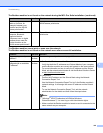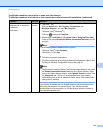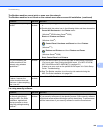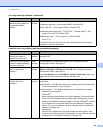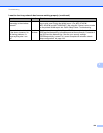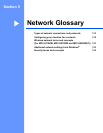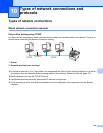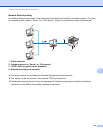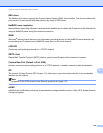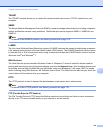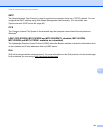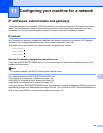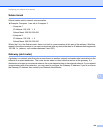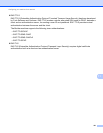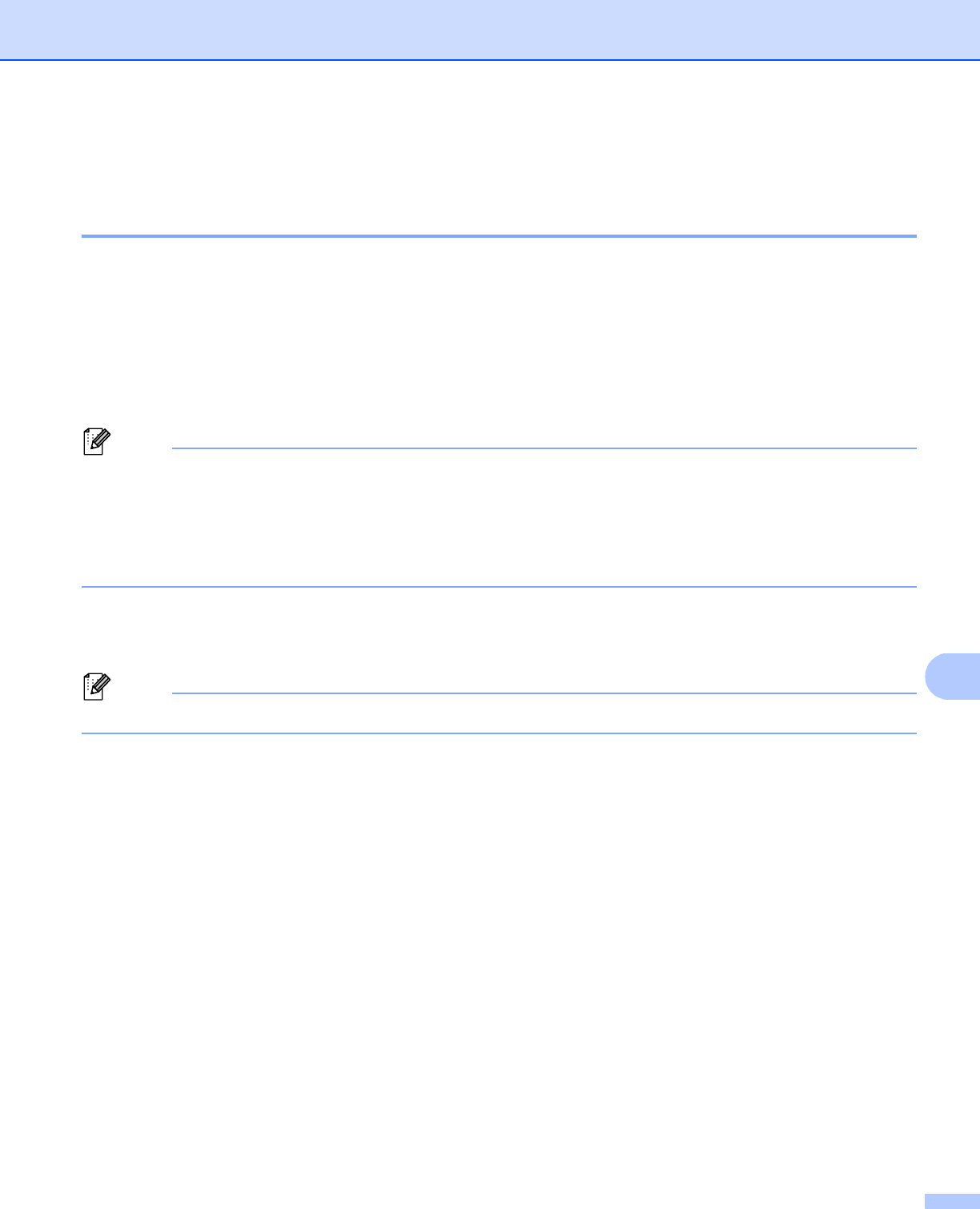
154
Types of network connections and protocols
10
Protocols 10
TCP/IP protocols and functions 10
Protocols are the standardized sets of rules for transmitting data on a network. Protocols allow users to gain
access to network connected resources.
The print server used on the Brother machine supports the TCP/IP (Transmission Control Protocol/Internet
Protocol) protocol.
TCP/IP is the most popular set of protocols used for communication such as Internet and E-mail. This protocol
can be used in almost all operating systems such as Windows
®
, Windows Server
®
, Mac OS X and Linux
®
.
The following TCP/IP protocols are available on the Brother machine.
Note
• You can configure the protocol settings by using the HTTP interface (web browser). (See How to configure
the machine settings using Web Based Management (web browser) uu page 92.)
• To find what protocols your Brother machine supports, see Supported protocols and security features
uu page 173.
• For information about supported security protocols, see Security protocols uu page 170.
DHCP/BOOTP/RARP 10
By using the DHCP/BOOTP/RARP protocols, the IP address can be automatically configured.
Note
To use the DHCP/BOOTP/RARP protocols, please contact your network administrator.
APIPA 10
If you do not assign an IP address manually (using the control panel of the machine or the BRAdmin software)
or automatically (using a DHCP/BOOTP/RARP server), the Automatic Private IP Addressing (APIPA)
protocol will automatically assign an IP address from the range 169.254.1.0 to 169.254.254.255.
ARP 10
Address Resolution Protocol performs mapping of an IP address to a MAC address in a TCP/IP network.



